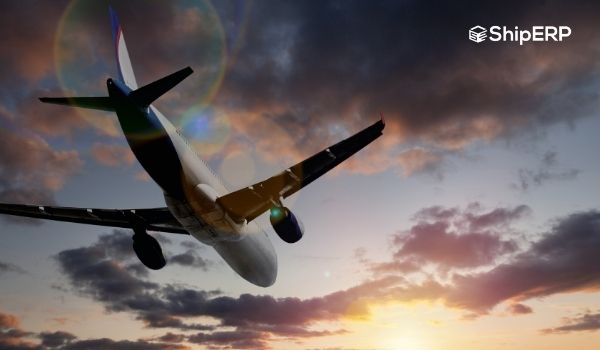
4 Things IATA Wants You to Know About HAZMAT Shipping
Over the past several years, eCommerce has exploded in a way few saw coming. While in-person buying options are certainly going to hang around for a long time yet, online has an irresistible draw for its convenience, speed, and time-saving abilities. It's a consumer dream; companies able to ship practically anything straight to consumer doors. However, some items aren't quite as straightforward – namely, hazardous materials.
While it's still very possible to box these up and get them where they need to go, shipping hazardous materials can still be very tricky. And this is only made worse by the fact that this category of goods is far broader and more impactful than you'd ever expect, even many of our household cleaners and everyday products finding themselves slapped with this label. Sending out these materials gets significantly more manageable, though, when you know the process needed.
That's why we're here. Continue reading to learn four essential things the IATA wants you to know when shipping dangerous goods. Keep these IATA shipping regulations in mind and getting any products from point A to point B should be a cinch.
What is the IATA?
The IATA is the International Air Transport Association. It's a membership organization and global trade association for all aviation industry sectors, including airlines, airports, air cargo carriers, aircraft manufacturers, and other ground handling companies.
This association has many different responsibilities, formulating all sorts of industry policies to ensure safety and security for the world's airlines and all the people who benefit from it. Among the most important has been their formulated standards for dealing with hazardous materials and dangerous goods, which outlines practices all shipment companies and individuals alike should stick to.
What Products are Considered Hazardous?
When one thinks of the terms "hazardous materials" or "dangerous goods," they have a particular image in mind, something along the lines of radioactive waste and highly toxic chemicals immediately popping up in their head. Sure, those would definitely be included under the label, but there's a whole suite of other materials that count when talking about IATA shipping, ones you would never see coming. For example, nail polish, brake fluid, detergents, kitchen cleaners, vapes, basically anything that comes with a battery. All of those are labeled dangerous goods despite how common and utterly ordinary they are within our lives.
Are you confused about why these products make the dangerous goods cut but others don't? It all lies in the potential impact on workers and consumers. When trying to figure out what's considered hazardous and what's not, a good rule of thumb is to think about their general "handle-ability."
What would happen if someone mishandled the product in question? Would dropping it or spilling it cause any particular concerns? If someone got it on their skin, could that hurt them? And what about if they were to come into contact with other materials? Would that cause a dangerous reaction? If the answer is yes to any of these questions and could cause potential harm, the IATA would likely consider it a hazard that needs more thorough safety measures.

Shipping Guidelines & 4 Pieces of Advice for IATA Shipping
The IATA doesn't just make up a bunch of rules for no reason. Their IATA shipping regulations prevent accidental product mishandling of hazardous materials and any unnecessary accidents, ensuring greater safety for workers and passengers onboard aircraft. Want a glimpse at some of the most critical guidelines (and advice) given by the association? We've got that right here with four IATA shipping points to remember before sending off any potentially dangerous products:
Any international package needs a "shipper's declaration"
Sort of a passport for hazardous products, a shipper's declaration is known as an Air Waybill is essential for proper IATA shipping. This document will provide all the necessary details and info about your shipment so it can be appropriately processed by customs officials in the destination country, allowing you to do your business without any serious trouble.
It also signals that the air carrier acknowledges everything within their possession and their own responsibility while functioning as a receipt for the person or company on the other side of the IATA shipping coin.
For more information on filling out a shipper's declaration for dangerous goods, check out our easy guide: 13 Must-Have Details in a Shipper's Declaration for Dangerous Goods.
Do not ship these materials alongside other products – make sure to ship them individually.
Hazardous materials don't always have to pose a danger all their own. As mentioned before, sometimes it's just a matter of poor interactions between products or risky reactions to poor handling. IATA shipping procedures prepare for this and thus call for all shipped materials to be separate from anything else you might be sending out for a lucky buyer.
It's an extra step that can seem irritating and wasteful. Still, it's vital for good safety. And while you're separating items for proper shipping, the IATA also recommends looking at your other packing practices, checking that you're using the suitable packing materials, securely sealing up any liquids, etc.
Know which classification they fall under and how to mark packages correctly according to their classifications.
IATA shipping best practices are always for appropriate precautions, and one of the biggest is correct labeling. All hazardous materials are split up into various classifications, starting from Class One explosives to Class Nine miscellaneous dangerous goods.
For regular retailers, the bulk of your IATA shipping parcels will probably fall into the final of these categories. However, it's still beyond essential for you to brush up on your knowledge and carefully mark packages before making their way onto the plane. It keeps transportation safe and efficient and shows that you've done your due diligence to protect those around you.
Always get insurance in place and make sure it covers the shipment of hazardous materials.
As any large company, regular retailer, or even one-person business will know, it's the importance of insurance. After all, accidents happen. Products get lost and damaged. Workers might not treat your packages with the care required and get hurt. Things go missing or cause damage when proper procedures somehow go out the window.
Insurance – well – insures you against this and is even more hugely beneficial when dealing with anything hazardous since they're more likely to cause severe problems than other products. IATA shipping should then always be paired with it. Just make sure to do your research to get the best policy possible and always guarantee it more than covers the transported material.
Want to make your IATA shipping experience easier?
If you’re looking to ship hazardous materials, it’s time to use a compliance software to make shipping faster and easier. Look no further! We offer ShipHAZ, a HAZMAT logistics application for SAP.
Discover how you can:
- Automate compliance documents with accurate information
- Prevent costly penalties
- Execute cartonization based on packing proposals and etc.


